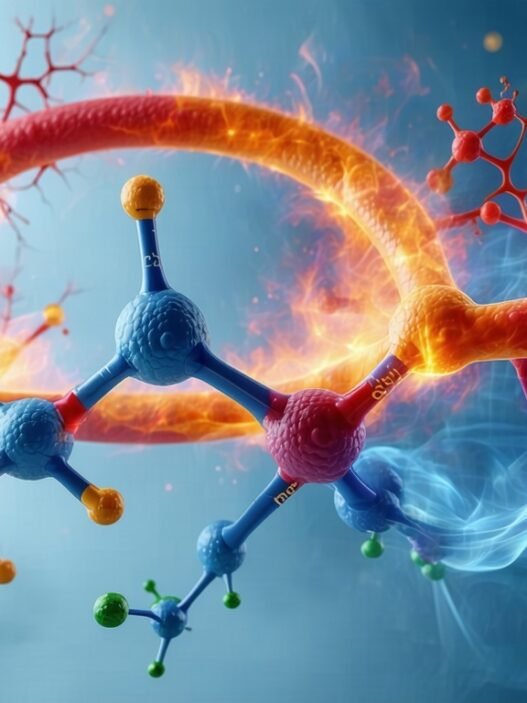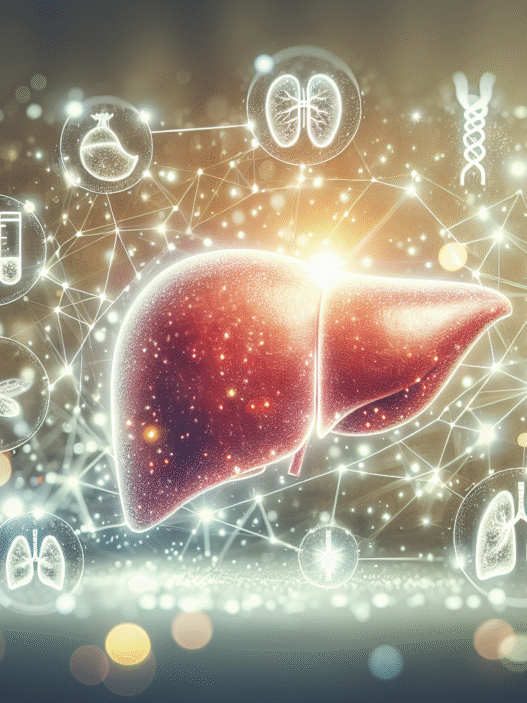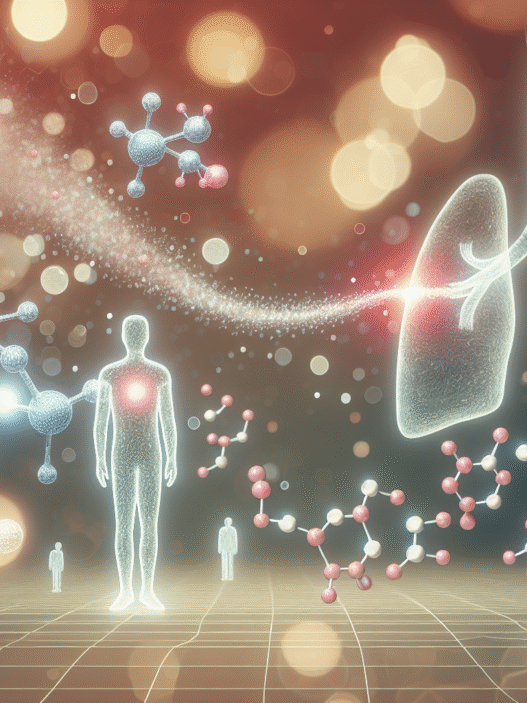NAC and Acetaminophen Toxicity
N-Acetylcysteine (NAC) has significant implications in the treatment of acetaminophen toxicity, an important health concern. Understanding the mechanism of action and the timeframe for efficacy is essential for those interested in how quickly NAC can provide benefits.
Mechanism of Action
NAC works primarily by boosting the levels of glutathione, a powerful antioxidant that helps the body detoxify harmful substances. In cases of acetaminophen overdose, it aids in the breakdown of acetaminophen, thereby potentially preventing liver or kidney damage. NAC may begin to show its benefits within eight to ten hours after ingestion of acetaminophen, reflecting its role as a crucial detoxifying agent (WebMD).
Time to Efficacy
The effectiveness of NAC in treating acetaminophen toxicity is highly time-sensitive. When administered within eight hours post-ingestion of acetaminophen, NAC is almost 100% effective in preventing serious health issues, including liver damage (NCBI Bookshelf). Immediate administration is critical to maximize its benefits and mitigate potential hepatotoxic effects.
| Time Post-Ingestion | Efficacy of NAC |
|---|---|
| Within 8 hours | ~100% effective |
| After 8 hours | Decreased effectiveness |
NAC’s role in managing acetaminophen toxicity is vital for individuals concerned about liver health or detoxification. For more information on NAC and its various uses, explore our article on what is nac n-acetyl cysteine used for?. Understanding the importance of timing when administering NAC can greatly influence outcomes associated with acetaminophen overdose.
NAC for Respiratory Health
N-Acetyl Cysteine (NAC) has gained recognition for its beneficial effects on respiratory health, particularly for those with chronic obstructive pulmonary disease (COPD) and other lung conditions. Understanding how quickly NAC kicks in can help individuals determine its potential impact on their respiratory function.
Effects on COPD
NAC may provide significant improvements for individuals with COPD. It works as a mucolytic agent, helping to thin and loosen mucus in the airways. This can result in easier expectoration, thus improving overall lung function. Research indicates that NAC can help reduce the frequency of exacerbations in patients, leading to fewer hospital visits and improved quality of life.
A study evaluating the benefits of NAC in COPD patients showed improved lung function markers after consistent use over several months. The following table summarizes the observed changes in key metrics:
| Lung Function Metric | Baseline | After NAC Treatment (Months) |
|---|---|---|
| FEV1 (L) | 1.04 | 1.18 |
| FVC (L) | 2.75 | 3.00 |
| Exacerbation Rate | 3/year | 1/year |
Impact on Lung Function
NAC may enhance lung function through its antioxidant properties. It helps to replenish glutathione levels, which play a crucial role in combating oxidative stress in the lungs. This is particularly beneficial in conditions characterized by inflammation, such as asthma and COPD.
In addition to reducing mucus viscosity, NAC has shown potential in improving exercise tolerance and reducing fatigue among users. Evidence suggests that supplementation can lead to increased physical performance, which is vital for overall health and wellness, especially for those with compromised respiratory systems.
In conclusion, NAC not only aids in mucus clearance but also contributes to improved lung function over time. For individuals seeking to enhance their respiratory health, understanding the benefits of NAC supplementation is crucial. If more information is needed on the use of NAC, including its dosage forms, check our article on what is nac n-acetyl cysteine used for?.
NAC for Cystic Fibrosis
N-Acetyl Cysteine (NAC) plays a significant role in managing cystic fibrosis (CF) by targeting inflammation and aiding in reducing mucus buildup in the lungs. This section discusses two main areas where NAC provides benefits for individuals with CF: inflammation reduction and breaking down biofilms.
Inflammation Reduction
For individuals with cystic fibrosis, high doses of NAC (1,200 milligrams per day) are noted to be effective in diminishing inflammation within the airways. Inflammation is a hallmark of CF, which can lead to lung damage and exacerbate respiratory issues. NAC works by acting as an antioxidant, combating oxidative stress and ultimately reducing lung inflammation (WebMD).
As a mucolytic agent, NAC is known to break down disulfide bonds in mucus proteins. This function decreases mucus viscosity and elasticity, ultimately improving lung function and clearing the airways. Studies have shown that NAC therapy is beneficial in reducing inflammation in patients diagnosed with cystic fibrosis (PMC).
| Dosage | Effect |
|---|---|
| 1,200 mg per day | Reduces airway inflammation |
| Mucolytic action | Decreases mucus viscosity |
Breaking down Biofilms
Another critical benefit of NAC in cystic fibrosis management is its ability to break down biofilms. Biofilms are clusters of bacteria encased in a protective layer of mucus, making it difficult for antibiotics and the immune system to eliminate them. This is especially problematic in CF patients, as these infections can lead to further lung damage and complications.
NAC disrupts these biofilms, allowing for better clearance of pathogens from the lungs. In studies focused on the efficacy of NAC, it has been shown that administration of NAC leads to improved lung function and enhanced overall respiratory health. By combining the anti-inflammatory and biofilm-disrupting properties of NAC, patients with cystic fibrosis may see significant improvements in their pulmonary health and a reduction in infection-related complications.
| Benefit | Mechanism |
|---|---|
| Breaks down biofilms | Disrupts protective layers around bacteria |
| Improves lung function | Enhances clearance of pathogens |
Individuals considering NAC as part of their cystic fibrosis management should consult healthcare professionals to determine the appropriate dosage and ensure its integration with other medications. For more information about the diverse uses of NAC, visit what is nac n-acetyl cysteine used for?.
NAC for Fertility
N-Acetyl Cysteine (NAC) has garnered attention for its potential benefits in enhancing fertility for both men and women. Understanding how NAC impacts reproductive health can help individuals looking to improve their chances of conception.
Effects on Men
NAC may play a significant role in improving fertility in men. Studies suggest that NAC supplementation can enhance semen quality, which is crucial for male fertility. Improvements in parameters such as sperm count, motility, and morphology have been noted, potentially addressing issues related to infertility.
| Fertility Parameter | Before NAC Supplementation | After NAC Supplementation |
|---|---|---|
| Sperm Count | X million/ml | Y million/ml |
| Motility | A% | B% |
| Morphology | C% | D% |
The exact timeframe for NAC to exhibit these benefits can vary based on individual health factors. Some research indicates that improvements may be observed over several weeks of consistent supplementation. For a comprehensive understanding of NAC’s effects, individuals can explore further information on what is NAC n-acetyl cysteine used for?.
Effects on Women with PCOS
In women, particularly those diagnosed with Polycystic Ovary Syndrome (PCOS), NAC has shown promise in supporting fertility. It may help regulate insulin levels and improve hormonal balance, which can be beneficial for women facing challenges with ovulation due to PCOS. Some studies suggest that NAC supplementation can lead to enhanced ovulatory function and potentially increase the likelihood of conception.
| Fertility Factor | Impact of NAC in Women with PCOS |
|---|---|
| Insulin Levels | Decreased |
| Ovulatory Function | Improved |
| Conception Rates | Increased |
The improvements in reproductive health may take time to manifest, and consistency in supplementation is key. Women interested in incorporating NAC for fertility should consult healthcare providers to ensure it aligns with their overall health strategy. For information on potential side effects, individuals can visit what are the negative side effects of NAC?.
NAC’s emerging role in fertility for both genders highlights its potential benefits, making it a topic of interest for individuals seeking to enhance reproductive health through supplementation.
NAC for Immune Function
N-acetylcysteine (NAC) is increasingly recognized for its role in enhancing immune function. This section highlights its impacts on immune improvement and its potential antiviral properties.
Immune Function Improvement
NAC has demonstrated potential benefits in boosting immune function, particularly for individuals with compromised immune systems. Research indicates that NAC may help in the management of viral infections, including HIV, by improving immune responses and potentially suppressing HIV-1 reproduction. Given the complexities of immune health, integrating NAC into a health regimen could provide supportive benefits for those at risk of immune dysfunction (WebMD).
The timeline for noticing the effects of NAC supplementation generally spans several weeks. Most clinical studies suggest that the benefits of consistent NAC use become noticeable within 3 to 4 weeks of daily supplementation, due in part to its influence on glutathione production, a critical antioxidant for immune function (Transparent Labs).
| Immune Function Indicator | Timeframe for NAC Effects |
|---|---|
| Improved immune responses | 3 to 4 weeks |
| Glutathione replenishment | Several months |
Antiviral Properties
NAC also showcases promising antiviral properties that could benefit various viral infections. It has been observed to hinder the replication of the influenza virus, which may lead to a reduction in flu symptoms when taken regularly. This effect underscores NAC’s potential role in supporting overall respiratory health during viral outbreaks.
In summary, while the exact timeline for NAC’s antiviral effects can vary, individuals might start to notice improvements in immune function and reductions in viral symptoms after several weeks of consistent supplementation. For further insights on how NAC aids in immune support and its applications, feel free to read more about what is NAC N-acetyl cysteine used for?.
NAC Dosage and Administration
Understanding the various methods for taking N-Acetyl Cysteine (NAC) and the time it takes for benefits to manifest is essential for individuals interested in its health advantages.
Oral vs. Intravenous
NAC can be administered in several ways, including orally and intravenously. Each method offers distinct advantages depending on the situation.
| Administration Method | Characteristics |
|---|---|
| Oral | – Takes approximately 1 to 2 hours to reach maximum plasma concentration (Cmax). – Bioavailability is low (<10%), with limited amounts reaching systemic circulation (PMC). – Commonly used for long-term supplementation and general health benefits. |
| Intravenous | – Provides rapid delivery of high concentrations of NAC. – Effective for acute conditions such as acetaminophen overdose, where it is almost 100% effective if given within 8 hours post-ingestion. – Peak plasma concentration (Cmax) can be as high as 554 mg/L after a dosage of 150 mg/kg over 15 minutes (NCBI). |
The choice between oral and intravenous administration depends on individual health needs and the specific health benefits sought.
Timeframe for Benefits
The timeframe for experiencing the benefits of NAC can vary based on the method of administration and the individual’s health scenario.
-
Oral Administration: Benefits may be observed within a few hours, generally 1 to 2 hours after ingestion as the Cmax is achieved. Long-term effects may take days to weeks, depending on the health condition targeted.
-
Intravenous Administration: The rapid onset of effects is often noticed almost immediately, particularly in acute settings like acetaminophen toxicity, where immediate action is critical for efficacy.
Individuals interested in NAC for specific health issues can accomplish much by understanding how they administer it. Those keen to learn more about NAC’s applications may find our article on what is nac n-acetyl cysteine used for? particularly helpful.





















